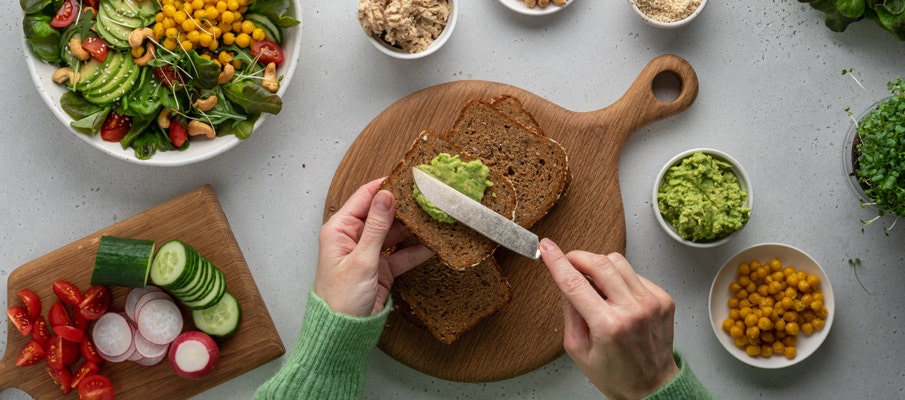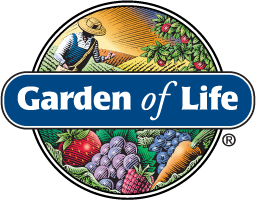What is Fiber? Plus, 10 High Fiber Foods
- 5/1/23


Surveys have found that fewer than 5% of Americans eat the minimum recommended amount of fiber, approximately 30-35 grams per day. Many people say they’re aware of the importance of fiber and think they get enough of it. However, overall low fruit and vegetable intake has made fiber a nutrient of public health concern, according to the Dietary Guidelines for Americans, for several years.
Let’s examine what fiber does for your body and how to get more of it, including 10 of the best high fiber foods.
What is Fiber?
Fiber, sometimes called bulk or roughage, is a critical nutrient only found in plants. It’s a type of carbohydrate that your body cannot digest. Unlike other types of carbohydrates that are broken down into glucose for energy, fiber serves other purposes as it moves through your digestive system.
There are two types of fiber: soluble and insoluble. Soluble fiber dissolves in water, is gel-like or viscous, and is fermentable by gut bacteria. Insoluble fiber does not dissolve in water and is nonfermentable as it travels through the intestines and adds bulk to your stool.
Fiber-rich foods contain both types but generally have more of one kind than the other. Eating a wide variety of fiber sources is the best way to ensure you’re getting a good balance of both types.
Fiber Health Benefits
The standard Western diet is characterized by a high intake of animal-derived products, like meat, seafood, dairy, and eggs, as well as convenience and ultra-processed foods. As a result, it tends to be high in saturated fat, sodium, and added sugar. Additionally, it’s usually lacking in fruits, vegetables, grains, legumes, nuts, and seeds — the only dietary fiber sources.
Fiber is an important nutrient for your health, with plenty of research in support of consuming enough of it. Let’s discuss some of the health benefits of fiber.
Supports Healthy Weight Management
Fiber promotes satiety, which means a high-fiber food helps keep you fuller for longer compared to a low-fiber food. Different types of fiber provide bulk and help slow the digestion of food, staving off hunger.
This can help prevent overeating and ultimately support healthy weight management. Plus, fruits and vegetables are high fiber, low-calorie foods. One study found that fiber intake promotes weight loss independently from calories or other nutrients among overweight individuals on a calorie-restricted diet.
Supports Heart Health
Eating enough fiber is good for your heart. Soluble fiber binds to cholesterol and helps support blood fats already within normal limits, which can benefit heart health.
Supports Normal Blood Sugar Regulation
Fiber helps prevent dramatic spikes in blood sugar after eating. Some studies have found that individuals who consume a high-fiber diet are more likely to have normal blood sugar levels.
Supports Digestive Health
Adequate fiber intake promotes bowel regularity. It helps decrease stool transit time, adds bulk to stool, and improves the digestion and absorption of food and nutrients.
Some fiber is fermentable by gut bacteria, which use it to produce short-chain fatty acids (SCFA) such as butyrate. Some research indicates that these SCFAs help support the integrity of your gut barrier, which may be one reason why getting enough fiber is important for overall wellness.
Furthermore, fiber helps support the health of your gut microbiome, the community of bacteria that live in your digestive tract. The health of your microbiome influences the health of the rest of your body, such as your immune system, hormones, and brain through the gut-brain axis.
10 Best Fiber Foods
Need to add some high-fiber foods to your diet? Here are some of the best fiber sources.
- 100% Whole Wheat Bread
When choosing bread for toast and sandwiches, choose ones that are made with 100% whole wheat as the first ingredient rather than ones labeled wheat or white. One slice of 100% whole wheat bread can provide 3-6 grams of fiber per slice.
- Apples
Whether you like Granny Smith, Red Delicious, Pink Lady, or other varieties, you’ll find around 4 grams of fiber per medium-sized apple. Enjoy them with their peel intact to get the most fiber benefit.
- Leafy Greens
Is spinach high in fiber? Yes! Leafy greens like spinach, kale, arugula, and lettuce are all great options for increasing fiber intake. One cup of raw spinach provides 0.5 grams of fiber, while one cup of cooked spinach provides 4.5 grams of fiber.
- Quinoa
A ½-cup serving of cooked quinoa provides 2.5 grams of fiber. Quinoa is one of the best high fiber grains that is as easy to cook as rice and works well in savory dinner dishes, breakfast bowls, or even popped like popcorn.
- Sweet Potatoes
Sweet potatoes can be mashed as a side or as part of waffle batter, baked and stuffed, or cubed and roasted to enjoy on their own, as part of a grain bowl, or as a side dish. One cup of roasted sweet potato cubes contains 3 grams of fiber.
- Carrots
Enjoy carrots raw, roasted, steamed, and added to a variety of dishes. One cup of raw chopped carrots contains 3.5 grams of fiber.
- Beans and Lentils
Dried and canned lentils, chickpeas, kidney beans, black beans, navy beans, and cannellini beans are great pantry stockers. A ½-cup serving of canned white beans provides 6 grams of fiber.
- Avocado
Try mashed avocado onto toast, used in sandwiches instead of mayonnaise, or on top of taco soup and burritos. A ½-cup of cubed avocado provides 5 grams of fiber.
- Broccoli
Cruciferous vegetables like broccoli are full of fiber. Find 1 gram of fiber in a ½-cup of chopped broccoli florets.
- Berries
There are so many types of delicious berries to choose from. A cup of halved strawberries contains 3 grams of fiber. You’ll get 1 gram of fiber for every 10 raspberries you enjoy.
Tips for Adding More Fiber
Most of us could benefit from adding a little more fiber to our regular dietary pattern. If you fall into this category, here are some ideas for getting more fiber on your plate:
-
Substitute lentils or crumbled tempeh instead of ground beef for slow cooker meals like chilis, stews, and taco filling.
-
Make a big salad at the beginning of each week that you can easily add as a side dish to your dinner.
-
Enjoy homemade trail mix as an easy grab-and-go snack made of things like nuts, seeds, dried fruit, and dark chocolate.
-
Add berries and sliced bananas to your oatmeal or cereal in the morning.
-
Make fruit and veggie-packed smoothies using things like frozen berries, leafy greens, pineapple, apples, pitted dates, and chia or flax seeds.
-
Layer your sandwiches and wraps with leafy greens, grated carrots, sliced cucumbers, bell peppers, and tomatoes.
-
Slather avocado onto veggie burgers or whole-grain toast.
-
Choose whole-grain and 100% whole wheat over refined, white bread and flour products.
-
Try new grains on your plate, like quinoa, brown rice, millet, teff, barley, or amaranth. These work well as the base for warm grain salads, added to leafy green salads, mixed into soups, or served with stir-fries.
-
Add a fruit and vegetable to every meal. Slice some of these ahead of time and keep them in the fridge for easy grabbing.
For an even more convenient option, consider adding a fiber supplement to your daily regimen, like Garden of Life's Raw Fiber or Dr. Formulated Organic Fiber Citrus Powder.
References
-
Quagliani D, Felt-Gunderson P. Closing America's Fiber Intake Gap: Communication Strategies From a Food and Fiber Summit. Am J Lifestyle Med. 2016;11(1):80-85. Published 2016 Jul 7. doi:10.1177/1559827615588079
-
Food Sources of Select Nutrients. Dietary Guidelines for Americans. (n.d.). Retrieved 22 March 2023. Available from: https://www.dietaryguidelines.gov/resources/2020-2025-dietary-guidelines-online-materials/food-sources-select-nutrients
-
Miketinas DC, Bray GA, Beyl RA, Ryan DH, Sacks FM, Champagne CM. Fiber Intake Predicts Weight Loss and Dietary Adherence in Adults Consuming Calorie-Restricted Diets: The POUNDS Lost (Preventing Overweight Using Novel Dietary Strategies) Study. J Nutr. 2019;149(10):1742-1748. doi:10.1093/jn/nxz117
-
Evans CEL. Dietary fibre and cardiovascular health: a review of current evidence and policy. Proc Nutr Soc. 2020;79(1):61-67. doi:10.1017/S0029665119000673
-
Soliman GA. Dietary Fiber, Atherosclerosis, and Cardiovascular Disease. Nutrients. 2019;11(5):1155. Published 2019 May 23. doi:10.3390/nu11051155
-
Weickert MO, Pfeiffer AFH. Impact of Dietary Fiber Consumption on Insulin Resistance and the Prevention of Type 2 Diabetes. J Nutr. 2018;148(1):7-12. doi:10.1093/jn/nxx008
-
Gill SK, Rossi M, Bajka B, Whelan K. Dietary fibre in gastrointestinal health and disease. Nat Rev Gastroenterol Hepatol. 2021;18(2):101-116. doi:10.1038/s41575-020-00375-4
-
Usuda H, Okamoto T, Wada K. Leaky Gut: Effect of Dietary Fiber and Fats on Microbiome and Intestinal Barrier. Int J Mol Sci. 2021;22(14):7613. Published 2021 Jul 16. doi:10.3390/ijms22147613
-
Fung TC. The microbiota-immune axis as a central mediator of gut-brain communication. Neurobiol Dis. 2020;136:104714. doi:10.1016/j.nbd.2019.104714
-
Mayer EA, Nance K, Chen S. The Gut-Brain Axis. Annu Rev Med. 2022;73:439-453. doi:10.1146/annurev-med-042320-014032





